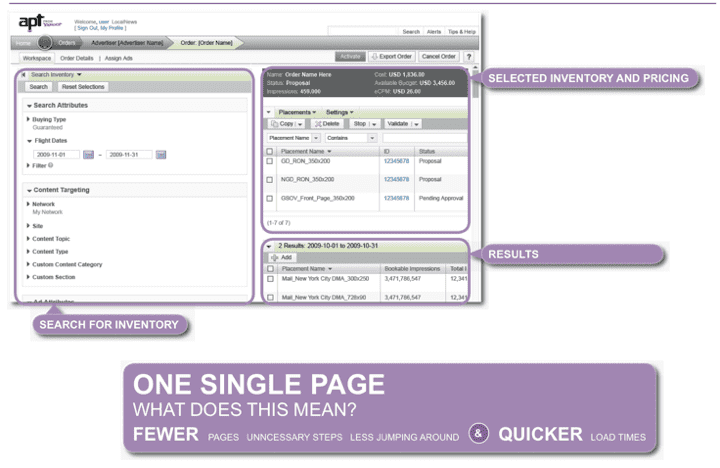A CEO Initiative - Driving Alignment
When I arrived to lead an Advertising Products UX team, my predecessors had build a new ad publishing tool. Unfortunately, Sales people in our own organization refused to use the product. The Senior VP of the Product organization and the Senior VP of the Sales organization jointly attended a meeting with the CEO to discuss the Sales team adopting it. The Senior VP of Sales argued that nobody asked them what they needed. The Senior VP of Product argued that Sales did not want to provide input, and just complained. In the end, the CEO told these two S-VPs that they had one year to get the Sales team using the new platform, or they would both be fired! That included getting feedback from sales, redefining the product roadmap, designing, building and releasing a new product.
Honestly, nobody else seemed eager to get in the middle of this emotional issue, because people’s careers were on the line. However, I tend to run toward the fire with a plan to resolve it, rather than away from it. As such, I approached the Senior Vice President of the Product organization (my S-VP) and asked him to let me lead a Rapid Design Lab to bring the teams together around a common vision. He agreed. It is true that such high stakes present risk, but in that risk arises opportunity to rise the tide for all organizations as well. In this case, I recognized the value of Rapid Design Labs, and had successfully brought teams together before using this method.
As part of the process, I formed an executive steering committee to which I could report on progress daily, to ensure complete and constructive participation. In this case though, the high stakes also promoted strong opinions and emotions.
In the end, in this Rapid Design Lab, we decided on a new design that reduced the number of pages with which users needed to interact. Users were originally forced through a sequence of screens where they performed a single task on each screen. The problem was twofold: First, they had no context from screen to screen, so often had to go back to see what they had entered previously, and then return to a subsequent screen. Second, this forced process did not let them experiment, which they needed to be able to do several times before completing their workflow.
During the design lab, we took the original sequence of 15 screens down to a single workspace, where users could modify all of the different values, and see the results in real-time in one location. It sped the process and provided much-needed flexibility.
We also identified how to ensure the product was highly performant and scalable with large data sets, and that sales agents could perform many tasks in bulk. It turned out that large data sets translated to large revenue. Though not easy, these changes were essential for this product to be marketable to large publishers. One week later, we had an interactive prototype based on our designs from the design lab. A week after this, a sales representative presented the interactive prototype to the Senior VP of Product and Sales and said “this is what we want.” Because Engineering participated, they agreed they could build it. And, the Product team agreed that the new version of the product would also sell much better externally.
More importantly, in the next year, the Sales organization had adopted the product, and we highlighted a win to the press. The Senior VP of Sales said “My team is thrilled with the relationship we’ve built with your organization. Coming together… in the design labs… made my Sales team feel heard and empowered for the first time. I’m giving you a thumbs-up on your plans. I like it that we can go back to the CEO with a positive story.”
The idea of Rapid Design labs spread across Yahoo!, and other product teams requested we teach them how to facilitate such labs. I have also taught over 1,000 other people in day-long classes how to conduct successful design labs, and have received a 6.59 out of 7 scoring from attendees.

